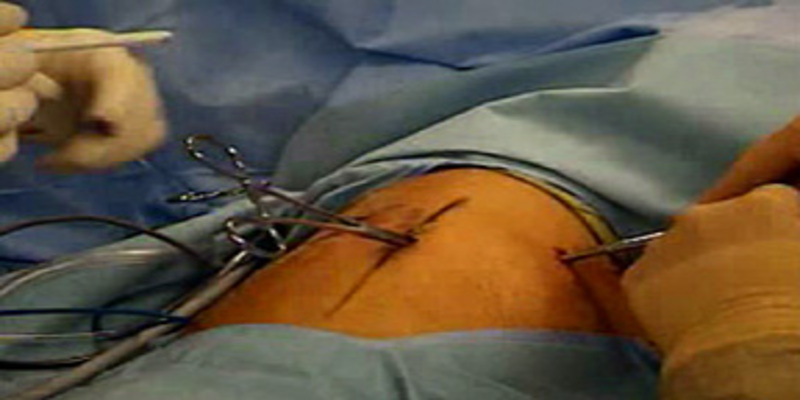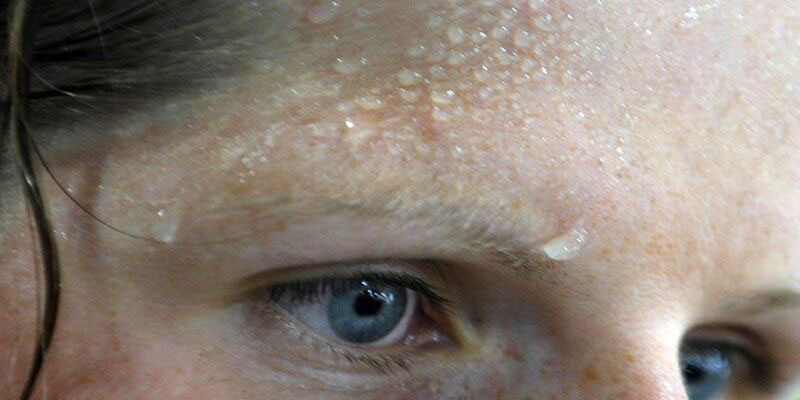Excessive perspiration that is not caused by a rise in core body temperature or physical exertion is a symptom of the medical disorder known as hyperhidrosis. Although it may occur anywhere on the body, most people notice symptoms in their hands, feet, armpits, and genitalia. Some persons with hyperhidrosis experience just a little annoyance from their condition, while for others, the social stigma, inability to participate in certain activities, and skin irritation caused by hyperhidrosis profoundly affect their everyday lives. Hyperhidrosis Surgery may be treated with antiperspirants, prescription medicines, or iontophoresis, among other methods. However, these therapies aren't always successful and often come with unwanted side effects that force patients to look for something more cutting-edge. Thoracic sympathectomy (or endoscopic thoracic sympathectomy) is a surgical procedure that may be used to treat hyperhidrosis (ETS).
What Is Surgery For Hyperhidrosis?
Surgery for hyperhidrosis often called thoracic sympathectomy or endoscopic thoracic sympathectomy (ETS), is performed to alleviate the condition of excessive sweating. The technique entails severing or destroying the sympathetic nerves in the chest, which are responsible for stimulating the sweat glands. An endoscope is inserted via tiny cuts in the patient's chest to see the nerves. The typical duration of the surgery, when conducted under general anesthesia, is 1-2 hours. Patients whose hyperhidrosis is so severe that it interferes with their everyday life after trying various medical approaches may be candidates for surgical intervention. Patients must weigh the advantages and disadvantages of the operation thoroughly before committing to it.
Overview Of Hyperhidrosis Surgery
Surgery for hyperhidrosis entails severing or eliminating the sympathetic nerves in the chest, which trigger perspiration. Small incisions are made in the chest, and an endoscope is used to inspect the nerves. It takes roughly two hours to complete and is done under full anesthesia.
Positive Aspects Of Hyperhidrosis Surgery
In patients whose disease has not responded to medicinal treatment, surgical surgery may provide a significant improvement in their symptoms, allowing them to lead more normal lives. The technique results in less sweat being produced in the areas that are treated, and the benefits of the procedure often last for a considerable amount of time. After the procedure, it is conceivable that the areas that were impacted will no longer produce any sweat at all.
Risks And Complications Of Hyperhidrosis Surgery

Like any surgical procedure, hyperhidrosis surgery carries certain risks and complications. These may include:
- Bleeding
- Infection
- Damage to surrounding tissues or organs
- Nerve damage
- Chest pain
- Unsatisfactory results
Recovery From Hyperhidrosis Surgery
After the surgery, patients will need to stay in the hospital for a few days to allow the surgical incisions to heal. Pain medication may be prescribed to help manage any discomfort. Patients must also avoid lifting heavy objects and participating in strenuous activities for several weeks to allow the chest muscles to heal properly.
Candidacy For Hyperhidrosis Surgery
Not everyone is a good candidate for hyperhidrosis surgery. The procedure is typically recommended for patients who have tried other treatment options without success and who have severe hyperhidrosis that significantly impacts their daily lives. It is important for patients to discuss their options with a healthcare provider and carefully weigh the potential benefits and risks of the procedure before making a decision.
Alternatives To Hyperhidrosis Surgery

Several non-surgical treatment options are available for hyperhidrosis, including antiperspirants, prescription medications, and iontophoresis. These treatments may be effective for some patients and less risky than surgery. In addition, some patients may be able to manage their hyperhidrosis through lifestyle changes, such as avoiding triggers that increase sweating and wearing moisture-wicking clothing.
Conclusion
Hyperhidrosis surgery is a treatment option for individuals with excessive sweating that has not responded to other treatment options. The procedure involves cutting or destroying the sympathetic nerves in the chest responsible for activating the sweat glands. While the procedure can provide significant relief from excessive sweating and may be effective at reducing or eliminating sweating in the treated areas, it carries certain risks and complications, including bleeding, infection, nerve damage, chest pain, and unsatisfactory results. Recovery from the surgery may involve a hospital stay and the need to avoid lifting heavy objects and participating in strenuous activities for several weeks to allow the chest muscles to heal properly. It is important for patients to carefully consider the potential risks and benefits of the procedure and discuss their options with a healthcare provider before making a decision.




